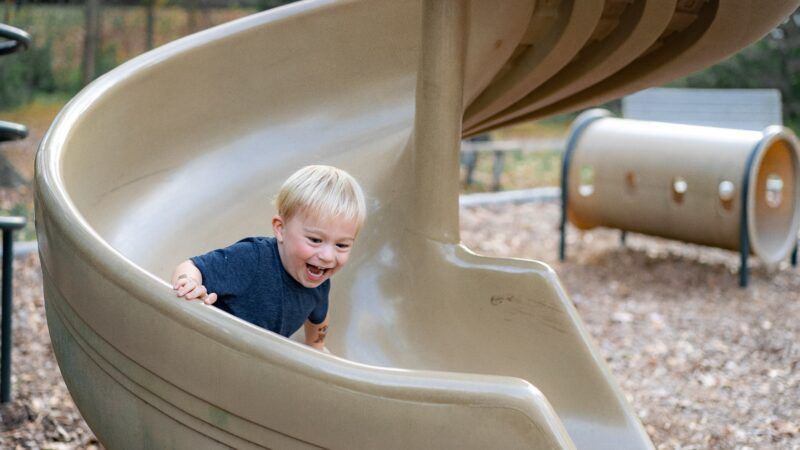German Insurance Companies Demand Perilous Playgrounds So That Kids Can Learn About Risk
"This is fantastic progress in understanding childhood as the right time for children to learn to recognize and mitigate risk."

Germany is adding greater risk to its playgrounds. Some of its climbing structures are now three stories high. And who is requesting this?
Insurance companies. They want kids to grow up "risk competent." Ironically, "safety" culture is stunting kids' risk assessing abilities, in their estimation.
"This is fantastic progress in understanding childhood as the right time for children to learn to recognize and mitigate risk," says Gever Tulley.
Tulley should know. He's founder of the San Francisco Brightworks School author of 50 Dangerous Things (You Should Let Your Children Do).
The idea for letting kids develop some basic climbing competency has grown in popularity in Germany. An influential 2004 study had found that "children who had improved their motor skills in playgrounds at an early age were less likely to suffer accidents as they got older," according to The Guardian. Moreover:
With young people spending an increasing amount of time in their own home, the umbrella association of statutory accident insurers in Germany last year called for more playgrounds that teach children to develop "risk competence".
That's music to an actuaries' ears—and also to some parents'. My friend Siobhan is a New York native who moved to Germany. A few years ago, when her daughter was in elementary school, she says, "The school replaced the standard playground equipment with four long, thick trees with their branches removed, all interconnected with wide ropes and wobbly bridges made of rubber. The whole thing was maybe six feet at the tallest point. But the trees had been polished so they were slippery."
Sure enough, says Siobhan, the very first week they were installed, "A girl fell off and broke her arm. As an American, I nervously anticipated the outrage that would surely follow. My heart was in my throat as I eavesdropped on the other parents at pick-up the following day. What did I hear? 'Children need to learn their limitations!'" There were no lawsuits are calls to tear down the equipment.
"Even international safety standards organizations—so often the 'fun police' when it comes to playgrounds—are coming round to a more balanced, pro-risk view," says Tim Gill, author of Urban Playgrounds: How Child-Friendly Planning and Design Can Save Cities.
While the appetite for risk here in the U.S. is perhaps a little slower to develop, New York City built its first adventure playground, The Yard, in 2016, complete with hammers, nails, and plenty of wood and saws. It stands by its credo: "No parents allowed." And as a denizen of play conferences, I can attest that many play scholars are eager for more exciting playgrounds.
Unfortunately, that runs smack into our culture's habit of underestimating kids, overestimating danger, and hiring trial lawyers. In 2019, a family that had sued the Howell Township, New Jersey, school district when their daughter fell off the slide and broke her arm won a settlement of $170,000. Their lawyer had argued that the slide's slope was too steep, as it was at a 35 degree angle, rather than 30.
Perhaps out of fear of just that kind of thing, one school district—Richland, Washington— just plain got rid of its swings, arguing that "swings have been determined to be the most unsafe of all the playground equipment."
That's only because all of the merry-go-rounds, and see-saws, and monkey bars have already been uprooted.
Thus does American childhood remain, for the most part, a mulch-chip, no-slip, primary-colored plastic safe space. Or, as a German insurance exec might put it, a risk-ignorance breeding ground.


Show Comments (64)